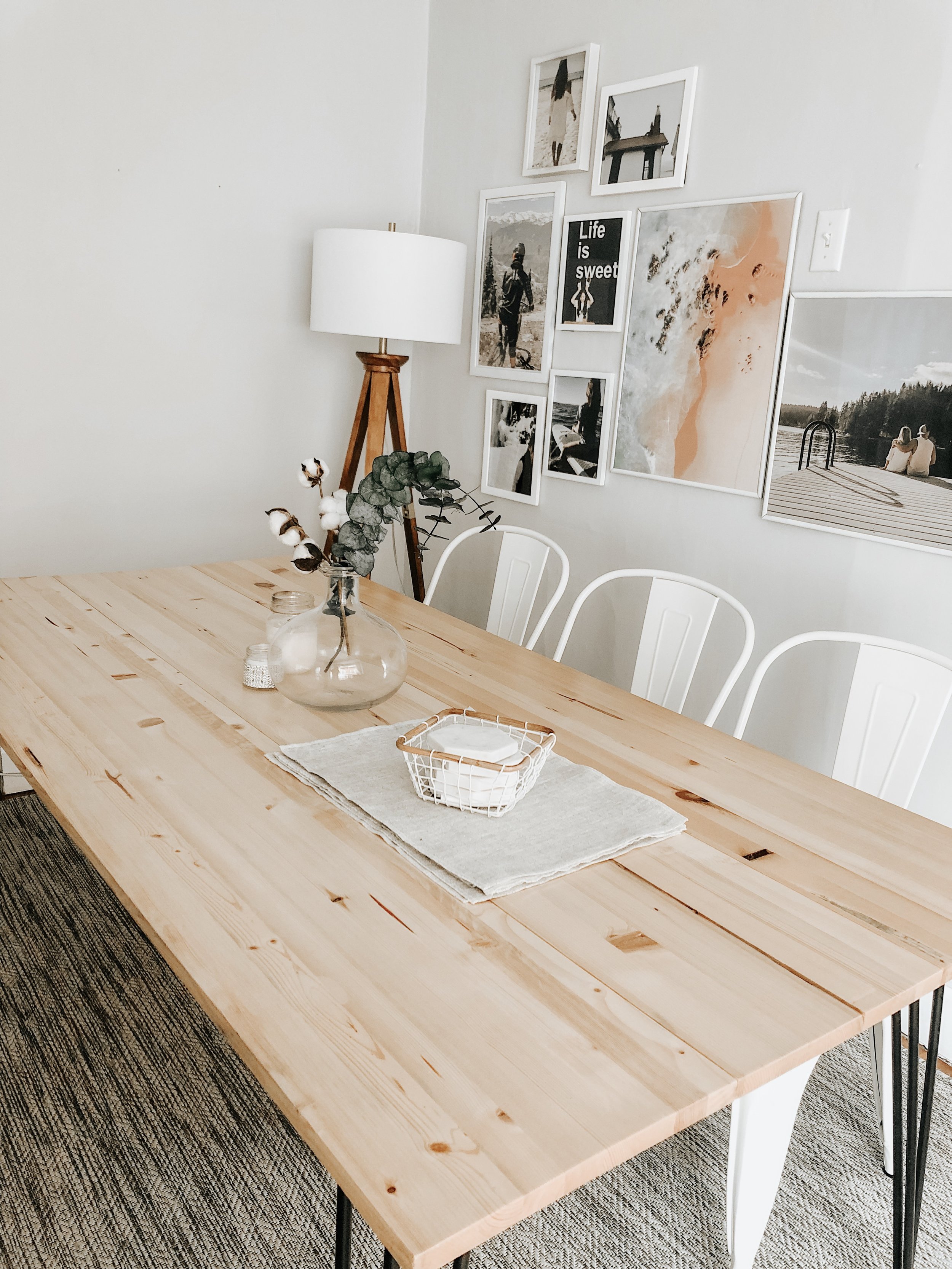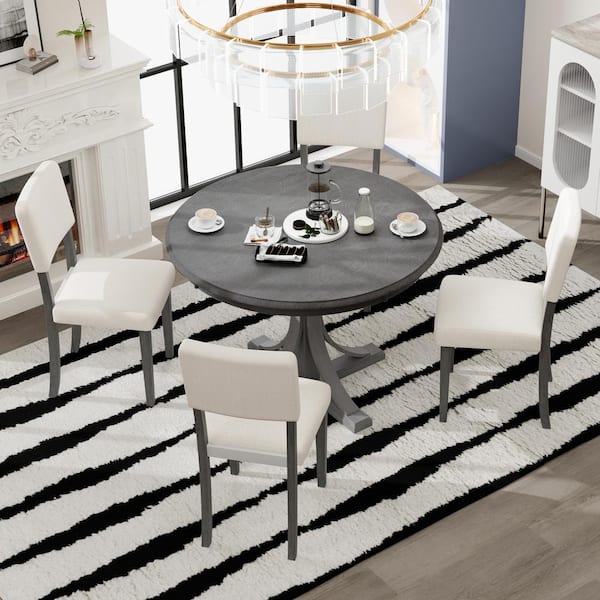Why Dining Room Table Legs Are Crucial for Your Table’s Stability
Why Dining Room Table Legs Are Crucial for Your Table’s Stability
Blog Article
Just How to Choose the Perfect Dining-room Table Legs for Your Home Décor
Selecting the perfect dining area table legs is a nuanced procedure that requires careful factor to consider of numerous aspects, including your area restraints, visual choices, and useful demands. The interaction between materials, dimensions, and designs can dramatically affect the atmosphere of your eating location, making it important to approach this choice systematically.
Assess Your Eating Space
Assessing your dining space is critical for picking the right table legs that complement both visual appeals and capability. Begin by gauging the measurements of your eating area, including ceiling elevation, floor space, and proximity to various other furniture. This details will aid determine the appropriate size and elevation of your dining table, which directly influences the choice of table legs.
Next, consider the style and design of your dining space. For circumstances, an open-concept design might gain from table legs that offer visual lightness, such as slim metal or acrylic choices. Conversely, a more traditional setup might ask for sturdy wood legs that offer a sense of permanence.
Assess the existing shade scheme and products in your eating area. Balancing the table legs with these components produces a natural look that improves the overall style.
Inevitably, an extensive assessment of your dining room will assist you in making an educated choice, making sure that your table legs not only enhance the aesthetic allure yet additionally offer sensible purposes.
Consider Your Style Preferences
When choosing eating room table legs, it is important to assess your personal style preferences, as they considerably affect the overall aesthetic of your dining area. Your option of table legs can either complement or comparison with existing decor, making it crucial to align them with your recommended interior decoration motif.
If your home leans towards a modern aesthetic, think about streamlined metal or minimalist wooden legs that supply a tidy, minimalist appearance. For a more typical method, ornate wooden legs with detailed carvings can add a touch of style and sophistication. Industrial styles profit from durable, basic materials such as redeemed wood and metal combinations, mirroring a rugged appeal.
In addition, farmhouse and rustic designs typically favor strong, beefy legs that stimulate a feeling of warmth and comfort. Alternatively, if your décor is diverse, you might choose unconventional shapes or a mix of products to develop aesthetic interest.

Evaluate Material Options
The option of product for dining space table legs plays a pivotal function in both durability and aesthetic appeal. Usual materials consist of wood, steel, and composite alternatives, each offering unique characteristics that can affect the overall appearance and longevity of your table.
Wood is a traditional option, recognized for its warmth and versatility. Hardwoods like oak and walnut give exceptional toughness and can be completed in different discolorations to match any kind of decor. Softwoods find out here now like ache are a lot more susceptible to dents and scrapes, making them much less excellent for high-traffic areas.
Metal legs, often crafted from steel or aluminum, emanate modernity and commercial appeal. They are immune and very sturdy to wear, making them ideal for households with children or constant events (dining room table legs). In addition, steel can be completed in different shades, enhancing the modification opportunities
Composite materials, such as MDF or laminate, offer price and varied styles. While usually much less long lasting than solid wood or steel, they can still offer a trendy look and are typically very easy to maintain.
Eventually, the product you pick must straighten with your lifestyle, visual choices, and the level of usage your dining table will experience.
Determine Height and Size
Picking the proper height and dimension for your dining-room table is essential for both capability and comfort. The basic elevation for eating tables typically ranges from 28 to 30 inches, permitting sufficient legroom for the majority of people when seated. It is crucial to take into consideration the dimensions of your eating area and the types of chairs you prepare to utilize.

Moreover, take into consideration the percentages of your dining-room. A larger table in a roomy area can create a grand setting, while a smaller table functions well in even more intimate setups. Eventually, the right height and size will certainly integrate with your total decor and improve the dining experience for you and your visitors.
Explore Personalization Opportunities

Additionally, the layout of the legs can be tailored to fit numerous styles, such as rustic, modern-day, or commercial. For example, tapered legs can stimulate find out a mid-century contemporary feeling, while chunky, block-style legs may reverberate with typical or farmhouse style.
House owners can likewise discover shade finishes, from natural timber spots to paint, enabling them to match or contrast with the table top and bordering decor.
Moreover, leg elevation can be readjusted to fit particular seating plans or personal preferences, boosting both convenience and functionality.
Finally, one-of-a-kind decorations, such as makings or ornamental braces, can better customize the table legs, click to read making the eating experience not just a declaration yet a meal item in the home. By considering these personalization options, homeowners can produce an eating area table that really mirrors their uniqueness.
Conclusion
Choosing the perfect eating room table legs requires mindful consideration of various elements, consisting of the measurements of the dining area, design choices, material sturdiness, and desired height. Customization options further enhance the capability to accomplish a natural aesthetic that matches the overall design. By methodically reviewing these aspects, home owners can guarantee that the selected table legs not just accomplish functional requirements but additionally add positively to the eating experience and setting of the home.
Selecting the ideal dining room table legs is a nuanced process that needs mindful factor to consider of different components, including your room restrictions, visual choices, and sensible needs.Assessing your dining area is important for picking the right table legs that enhance both visual appeals and capability.When identifying dimension, determine the location where the table will be put to guarantee it fits easily, permitting for at least 36 inches of clearance around the table for easy motion. A larger table in a spacious area can create a grand setting, while a smaller sized table functions well in more intimate setups.Selecting the ideal eating room table legs needs cautious consideration of different factors, consisting of the dimensions of the eating area, style choices, material sturdiness, and preferred elevation.
Report this page